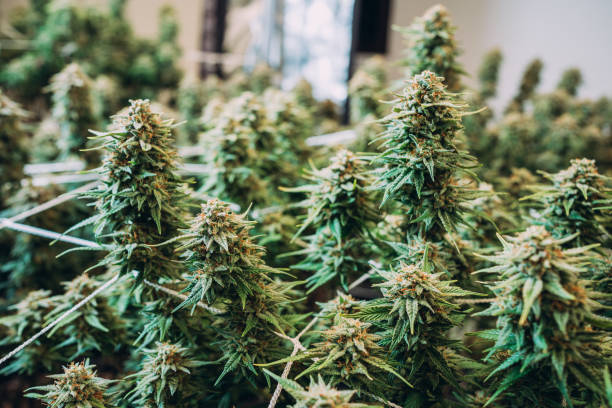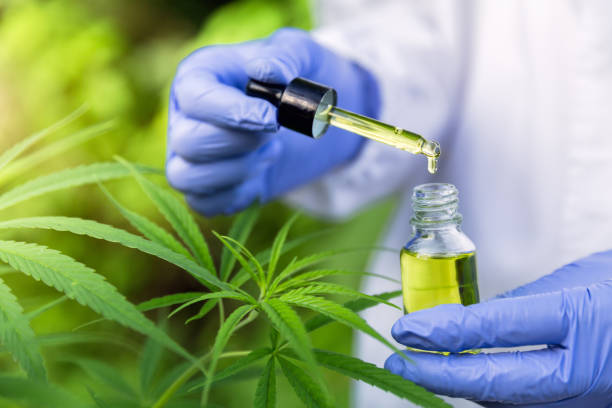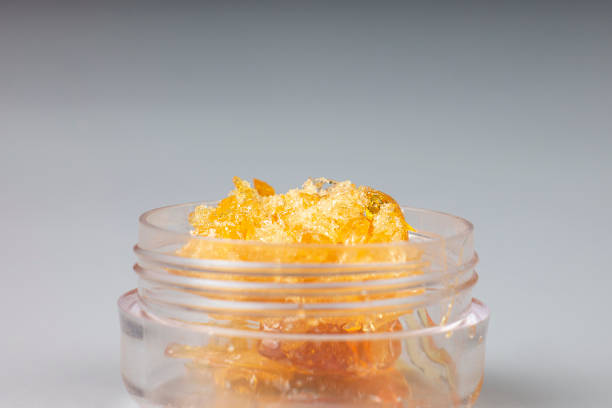The Battle Of Potency: Understanding The Differences Between Weed Concentrates And Flower
The use of marijuana has been on the rise in recent years, with many individuals turning to it for recreational and medicinal purposes. As a result, there has been an increase in the variety of products available, with weed concentrates and flower being among the most popular. However, with so many options to choose from, it can be challenging to determine which is best for you.
In this article, we will explore the differences between weed concentrates and flower to help you make an informed decision. We will examine what each product entails, their consumption methods, as well as their pros and cons. Ultimately, our goal is to provide you with a comprehensive guide that will allow you to choose the right option based on your preferences and needs.
What are Weed Concentrates?
Extracts of cannabis that are derived through the use of solvents or mechanical means and contain high levels of cannabinoids and terpenes are commonly referred to as concentrated forms of the plant. These extracts can come in various forms, including oils, waxes, shatter, budder, and live resin. Concentrates are typically much more potent than traditional cannabis flower due to their higher concentration of active compounds. They can also offer a more diverse range of flavors and aromas than flower.
The process for extracting concentrates involves separating the trichomes from the rest of the plant material. Trichomes are tiny glandular structures on the surface of cannabis plants that produce cannabinoids and terpenes. The most common method for extraction involves using a solvent such as butane or CO2 to dissolve the trichomes and create an oil or wax concentrate. Other methods include using heat (such as with rosin) or mechanical agitation (such as with bubble hash). While concentrates have become increasingly popular in recent years, they do carry some risks due to their high potency and manufacturing processes that may involve potentially hazardous chemicals if not done properly.

Understanding Flower
This discussion aims to provide an overview of the subtopic on understanding flower, covering several key points. Firstly, we will explore the different varieties of flower that are available within the market and their respective characteristics. Additionally, we will delve into how one can identify quality flower, including factors such as appearance, aroma and texture. Lastly, we will examine potency and effects as important considerations when choosing a flower strain for personal use or medicinal purposes.
Varieties of Flower
The world of cannabis presents a vast range of flower varieties, each with its unique characteristics, aroma profiles, and effects. Sativa strains are known for their uplifting and energizing effects on the mind and body. They typically have high levels of THC, the psychoactive compound responsible for the euphoric sensations associated with marijuana use. Sativas are often used during the day to promote creativity, focus, and productivity.
On the other hand, indica strains are known for their calming and relaxing effects on the mind and body. Indicas typically have higher levels of CBD, a non-psychoactive compound that interacts with the body's endocannabinoid system to promote relaxation and reduce anxiety. Indicas are often used at night to help users unwind after a long day or to aid with sleep. Hybrid strains are a combination of both sativa and indica genetics, offering a balance between energizing and relaxing effects depending on their specific genetic makeup.
How to Identify Quality Flower
Identifying the quality of cannabis flower is an important aspect of consuming the plant, as it ensures that users receive a consistent and desirable experience while avoiding potential health risks associated with contaminated or low-quality products. The first thing to look for when assessing the quality of flower is its appearance. High-quality buds should be dense, sticky, and covered in trichomes, which are tiny crystal-like structures that contain cannabinoids and terpenes. In addition, the color of the buds should be vibrant and uniform throughout, indicating that they were grown in optimal conditions.
Another factor to consider when evaluating cannabis flower is its aroma. A strong and pleasant scent is a sign of good quality bud, as it indicates that terpenes are present in high concentrations. Terpenes not only contribute to the flavor and aroma of cannabis but also have various therapeutic effects on the body. Lastly, testing for potency can provide valuable information about the THC (tetrahydrocannabinol) content of a particular strain. While high THC levels do not necessarily equate to better quality flower, they can indicate a stronger psychoactive effect that some users may prefer. Overall, identifying quality cannabis flower involves considering multiple factors such as appearance, aroma, and potency to ensure a safe and enjoyable experience.
Potency and Effects
Exploring the relationship between cannabis potency and its effects is a crucial aspect of understanding the plant's psychoactive properties. The potency of cannabis refers to how much THC, or tetrahydrocannabinol, it contains. THC is the primary psychoactive compound in cannabis that produces the "high" associated with its consumption. Generally, strains with higher levels of THC are considered more potent and can produce stronger effects on the mind and body.
However, it's important to note that other compounds in cannabis, such as CBD (cannabidiol), can also affect its overall potency and effects. CBD has been found to have non-psychoactive properties that counteract some of THC's effects, potentially leading to less intense highs. As such, understanding the balance between these compounds in different strains can help individuals make informed decisions about which products to consume based on their desired outcomes.
Differences in Consumption Methods
Various methods of consumption exist for cannabis products, each with distinct advantages and drawbacks that can affect user experience. One of the most traditional ways to consume cannabis is by smoking the flower. This method involves burning ground-up plant material and inhaling the smoke produced. Smoking provides a quick onset of effects, but it also has some disadvantages such as potential lung irritation or damage due to inhalation of smoke.
On the other hand, weed concentrates offer a more potent and efficient way to consume cannabis without the need for combustion. Concentrates are made by extracting THC (the psychoactive compound in cannabis) from the plant matter using solvents like butane or CO2. The resulting product can be much more potent than flower, sometimes containing upwards of 80-90% THC compared to an average of 15-20% in flower. Concentrates can be consumed through vaporization, dabbing or even added to food and drinks which makes them versatile options for users who prefer not to smoke or want a stronger high experience. However, it's important to note that concentrates are highly potent and require careful dosing since they have a greater risk of causing unpleasant side effects if overconsumed.

Pros and Cons of Weed Concentrates and Flower
When it comes to consuming cannabis, there are distinct advantages and disadvantages between using weed concentrates and flower. Potency is one of the most significant differences between the two, with concentrates having a much higher THC content. Flavor and variety also differ greatly, with flower offering a wider range of flavors and strains to choose from. Additionally, cost and accessibility play a role in deciding which method may be best for an individual's needs.
Potency
The comparative strength of cannabis derivatives and naturally occurring marijuana serves as an important factor in discerning the optimal substance for consumption. Weed concentrates, such as oils, waxes, and shatters, are made by extracting THC and other cannabinoids from the plant material using solvents like butane or CO2. As a result, they can contain up to 90% THC or more. On the other hand, dried flower typically contains THC levels of around 15-25%, with some strains reaching up to 30%.
The potency difference between concentrates and flower has its pros and cons. For one, concentrates provide a much more intense high due to their high THC content. However, this can also lead to adverse effects like anxiety and paranoia if consumed in large amounts or by inexperienced users. Flower offers a milder high that is easier to control and dose accurately. Additionally, many people prefer flower for its natural taste and aroma compared to the sometimes harsh flavor of concentrates. Ultimately, deciding between weed concentrates and flower depends on personal preference, tolerance level, and desired effects.
Flavor and Variety
An appreciation for the diverse range of flavors and varieties available in marijuana is a crucial aspect to consider when choosing between different cannabis products. Flower, for example, offers a vast array of options that cater to varying preferences. The aroma and taste of flower are influenced by several factors such as genetics, growing conditions, and curing method. Indica strains are known for their earthy and musky flavor profile while sativa strains tend to have a more citrusy or fruity taste. Hybrid strains, on the other hand, offer a blend of both indica and sativa characteristics resulting in unique flavor profiles.
Concentrates also offer an extensive range of flavors but typically have a more intense taste than flower due to their high potency levels. Terpenes, the organic compounds responsible for aroma and taste in marijuana plants, are often extracted from flower and added into concentrates to enhance their flavor profile further. Concentrates can come in various forms such as wax, shatter, budder or oil with each having distinct properties that affect its taste. Ultimately deciding between concentrates or flower will depend on personal preference whether it be wanting a potent high or experiencing the full spectrum of flavor profiles offered by different strains.
Cost and Accessibility
Examining the cost and accessibility factors of cannabis products is essential in determining their practicality for consumers. When it comes to flower and concentrates, there are significant differences in both aspects. Flower tends to be more accessible as it can be found in most dispensaries, while concentrates may require a bit more effort to obtain. This is because extraction methods vary, and some concentrates can only be found at specific dispensaries or through certain vendors.
In terms of cost, concentrates tend to be pricier than flower due to the extensive process required to make them. The equipment needed for extraction is expensive, which translates into higher prices for consumers. However, potency levels are much higher with concentrates compared to flower, meaning that less product is needed for the same effects. Ultimately, cost and accessibility should be considered when deciding between flower and concentrate consumption.
Choosing the Right Option for You
Selecting the appropriate option for individual consumption requires a thorough consideration of various factors, including preferred potency levels, desired effects, budget constraints, and personal preferences. When it comes to choosing between weed concentrates and flower, it is important to understand that these options vary significantly in terms of their potency and effects. Concentrates are highly potent and provide an intense high due to their high THC content. They offer a faster onset time and longer-lasting effects compared to flower. However, they may not be suitable for beginners or those with low tolerance levels as they can cause adverse reactions such as anxiety or paranoia.
On the other hand, flower provides a milder high and allows users to control their dosage more easily. It offers various strains with different flavor profiles and effects that cater to individual preferences. Additionally, it is more affordable than concentrates due to its lower potency levels. However, flower has a slower onset time compared to concentrates and requires more material for consumption which can be inconvenient for some individuals. Ultimately, choosing between weed concentrates and flower depends on one's personal preference for potency level, desired effects, budget constraints as well as their experience with cannabis use.
Conclusion
In conclusion, the battle of potency between weed concentrates and flower is a complex one that requires a thorough understanding of both options. While weed concentrates offer a higher concentration of THC and can be more potent, they also come with potential risks such as increased tolerance and an increased likelihood of experiencing adverse effects. On the other hand, flower offers a more balanced experience with lower THC levels but comes with its own set of benefits including convenience and variety.
Ultimately, the choice between weed concentrates and flower depends on personal preferences and individual needs. It is important to consider factors like tolerance level, desired effects, consumption method preference, and overall health when making this decision. By understanding the differences between these two options and weighing their pros and cons carefully, individuals can make informed choices that will lead to safe and enjoyable experiences.
If you're interested to have more knowledge about this topic, feel free check this blog post from Local Product of Colorado: https://localproduct.co/weed-concentrates-vs-flower-effects-of-smoking-compared/

